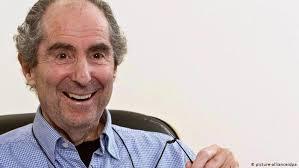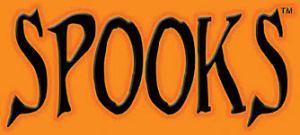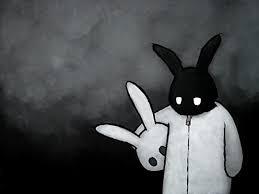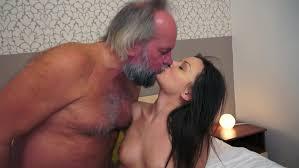Coleman Silk was a dynamo college dean who put his school on the map. Now he’s teaching a classics seminar; two students enrolled therein have never attended. “Does anyone know them?” he asks. “Do they exist, or are they spooks?”

That’s the set-up for Philip Roth’s 2000 novel, The Human Stain.
Turns out the students were Black. A complaint is lodged. Silk insists “spooks” meant ghosts, not a racial slur. He digs in; nobody backs him; winds up resigning in a huff. Which only seems to corroborate the odor of racism.
Making a big deal out of so obviously innocent a word usage might seem outlandish. Yet cases like this have proliferated since Roth wrote; “cancel culture” prosecutors lacking all sense of their extremist aburdism.

The subject was explored in Skidmore Professor Robert Boyers’s 2019 book, The Tyranny of Virtue (which I’ve reviewed). Since its publication another Skidmore prof met with calls for his firing, after his silently observing a “Blue Lives Matter” demonstration. Now even silence can be construed as “hate speech.”
Whose definition, of course, is any idea or opinion not rigidly conforming to the ideological catechism of today’s “woke” left-wing political correctness. Whose culture warriors are ever on the warpath for heretics to persecute.

More recently, Skidmore’s student government refused to allow Young American Libertarians to organize on campus. Saying YAL might make some students feel unsafe. Because YAL might engage in “hate speech.” Not that it has; it might. While in fact, what really makes everyone feel unsafe on campuses is this atmosphere of intolerant repression, with dire consequences for any perceived verbal misstep.
The woke Thought Police seem oblivious to how this horrifies normal sane people. “Cancel culture” hands the right an issue they exploit. Meantime, there’s almost nothing else in today’s right-wing belief system that doesn’t flout reality. Take your pick between those ugly extremes.
Roth’s own view is clear. Near the end, Coleman’s teacher sister delivers a damning indictment of how the modern education establishment betrays the essence of what education should be. Opening minds, not closing them.
Back to Coleman himself, his grievance against the college intensifies when his wife dies, killed by the “spooks” controversy, he feels. One of his children, Mark — always estranged, with some deep attitudinal problem — says the whole mess could have been defused by Coleman simply apologizing for the word. Roth doesn’t dwell on this, but Mark is, oddly enough, dead right. However, Coleman could not have apologized because of who he was.
And who was he, really? That’s what the novel is mainly about.

Coleman was, you see (spoiler alert), Black. Passing for white for half a century. How central (or not) to Coleman’s inner reality was his great secret? The narrator (Roth’s alter ego) poses the question, but cannot answer it.
A white girlfriend of two years didn’t know. When Coleman finally takes her to meet his family, she freaks out and is gone. He won’t make that mistake again, and tells his mother so. Resulting in his banishment from the family.
But it’s not a simple story. Roth, a consummate novelist, peels away layer after layer, and not just for Coleman, but other characters too, probing and probing what makes them tick.

One is Faunia, half Coleman’s age, become his lover. Seemingly the very picture of a beaten-down woman. Some assume Coleman is likewise ruthlessly exploiting her. But that’s not so. What is it, exactly, that they have together? Not simple either. Sex is key, and there are denials that it’s more than just sex, but saying “just sex” is wrong because their sex carries a heavy load of more fundamental human intimacy. How the author juxtaposes and balances these almost contradictory aspects of the relationship is a novelistic tour-de-force.
Indeed, he’s a master word-slinger, playing the language like Yefim Bronfman plays a piano. The book describes Bronfman himself doing just that at a rehearsal. Here is the passage, the power of Roth’s prose mirroring the very thing it describes:

“Enter Bronfman to play Prokofiev at such a pace and with such bravado as to knock my morbidity clear out of the ring. He is conspicuously massive through the upper torso, a force of nature camouflaged in a sweatshirt, somebody who has strolled into the Music Shed out of a circus where he is the strongman and who takes on the piano as a ridiculous challenge to the gargantuan strength he revels in. Yefim Bronfman looks less like the person who is going to play the piano than like the guy who should be moving it. I had never before seen anybody go at a piano like this sturdy little barrel of an unshaven Russian Jew. When he’s finished, I thought, they’ll have to throw the thing out. He crushes it. He doesn’t let that piano conceal a thing. Whatever’s in there is going to come out, and come out with its hands in the air. And when it does, everything out there in the open, the last of the last pulsation, he himself gets up and goes, leaving behind him our redemption. With a jaunty wave, he is suddenly gone, and though he takes all his fire off with him like no less a force than Prometheus, our own lives seem inextinguishable. Nobody is dying, nobody — not if Bronfman has anything to say about it!”

Bronfman is not the only actual personage popping up in the novel. I was tickled to see there someone with whom I myself had a recent phone conversation.
